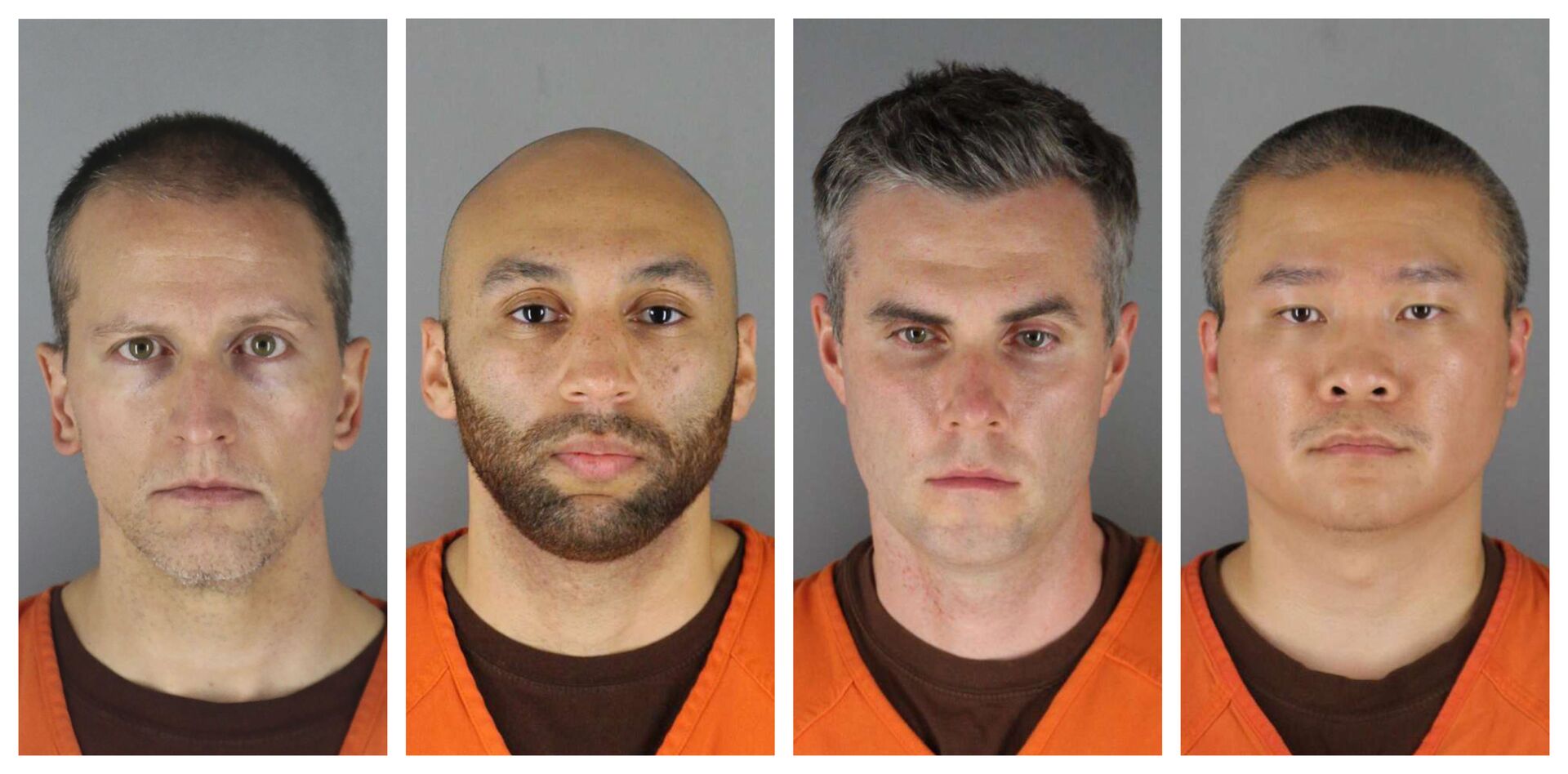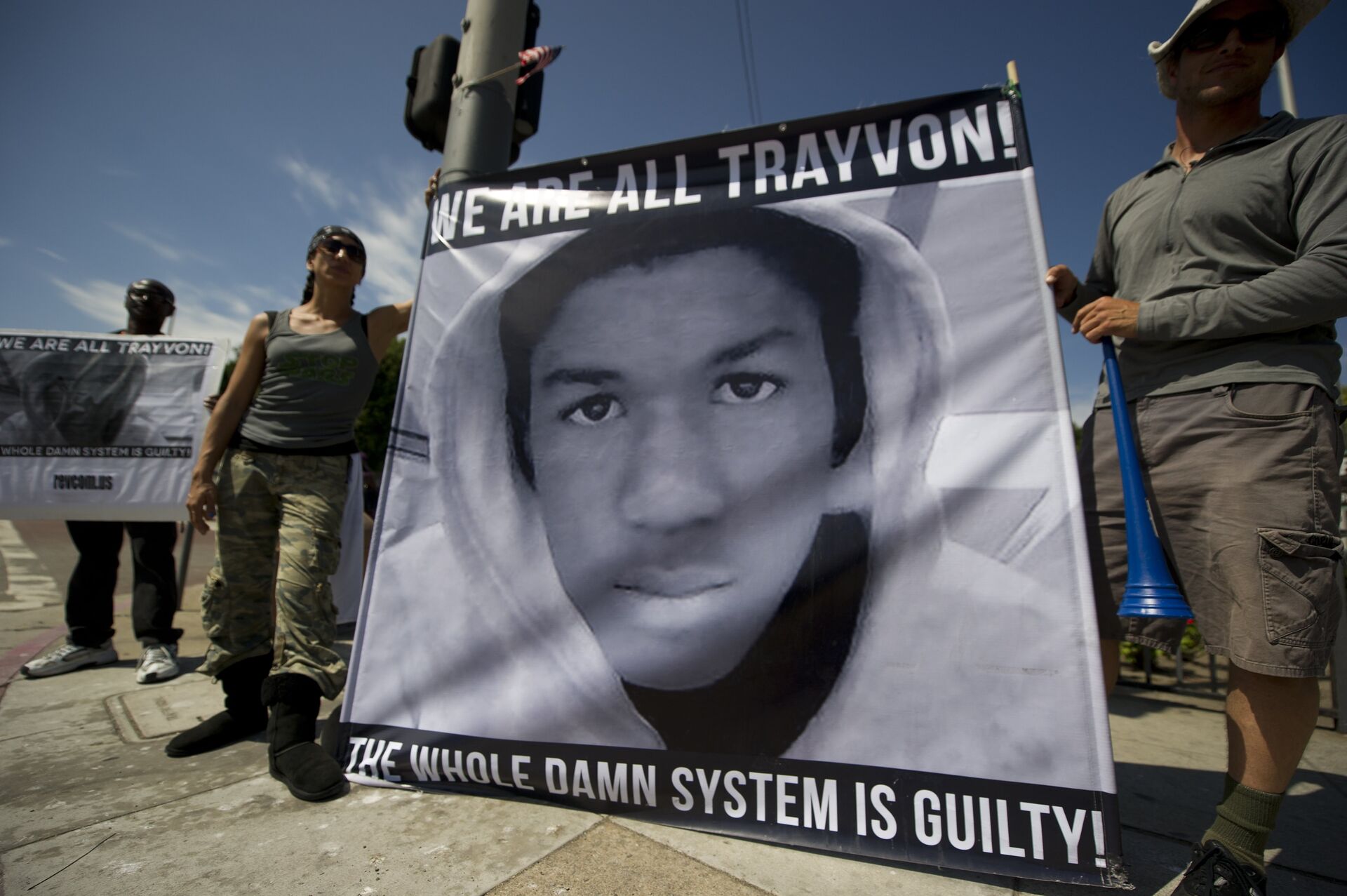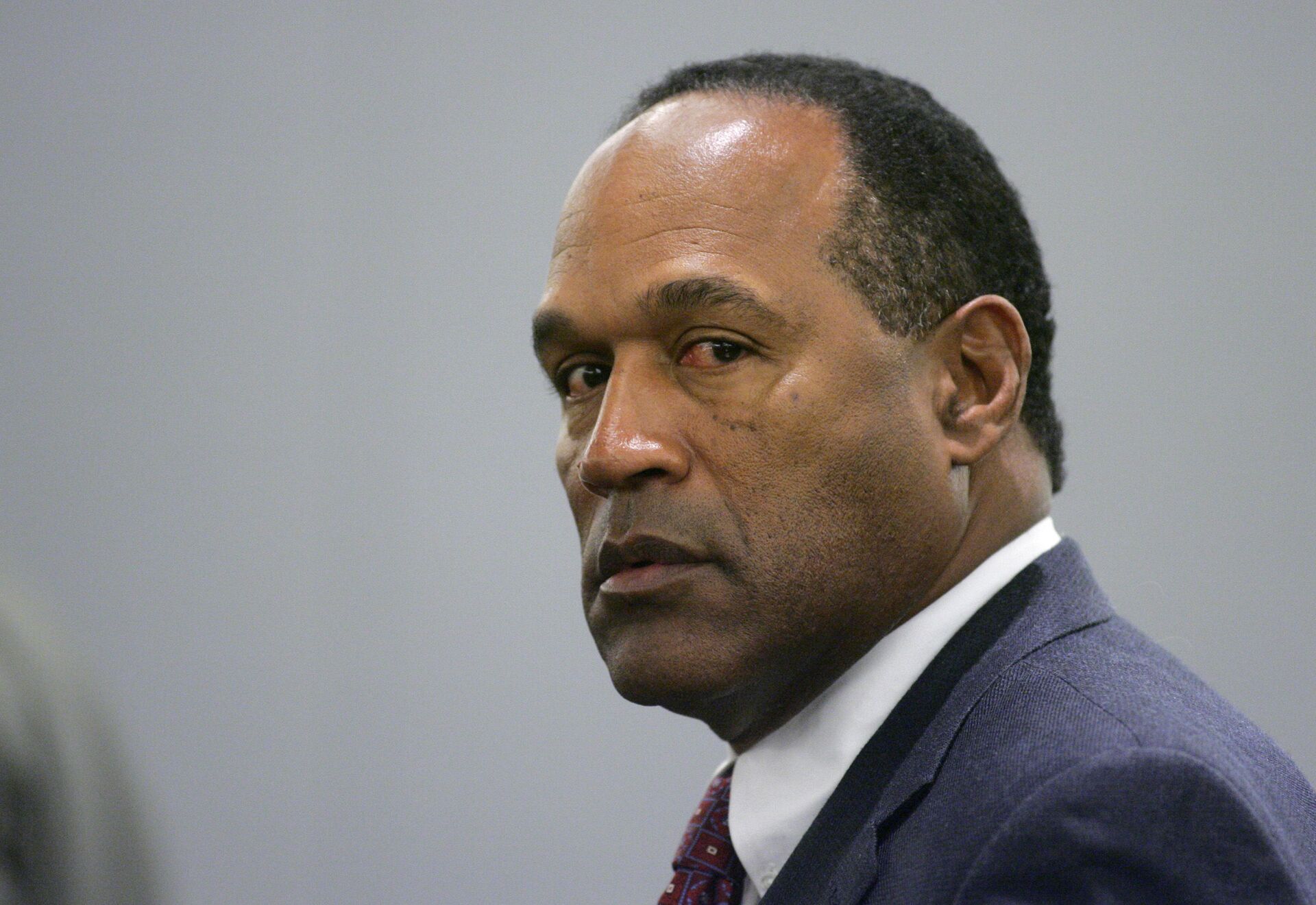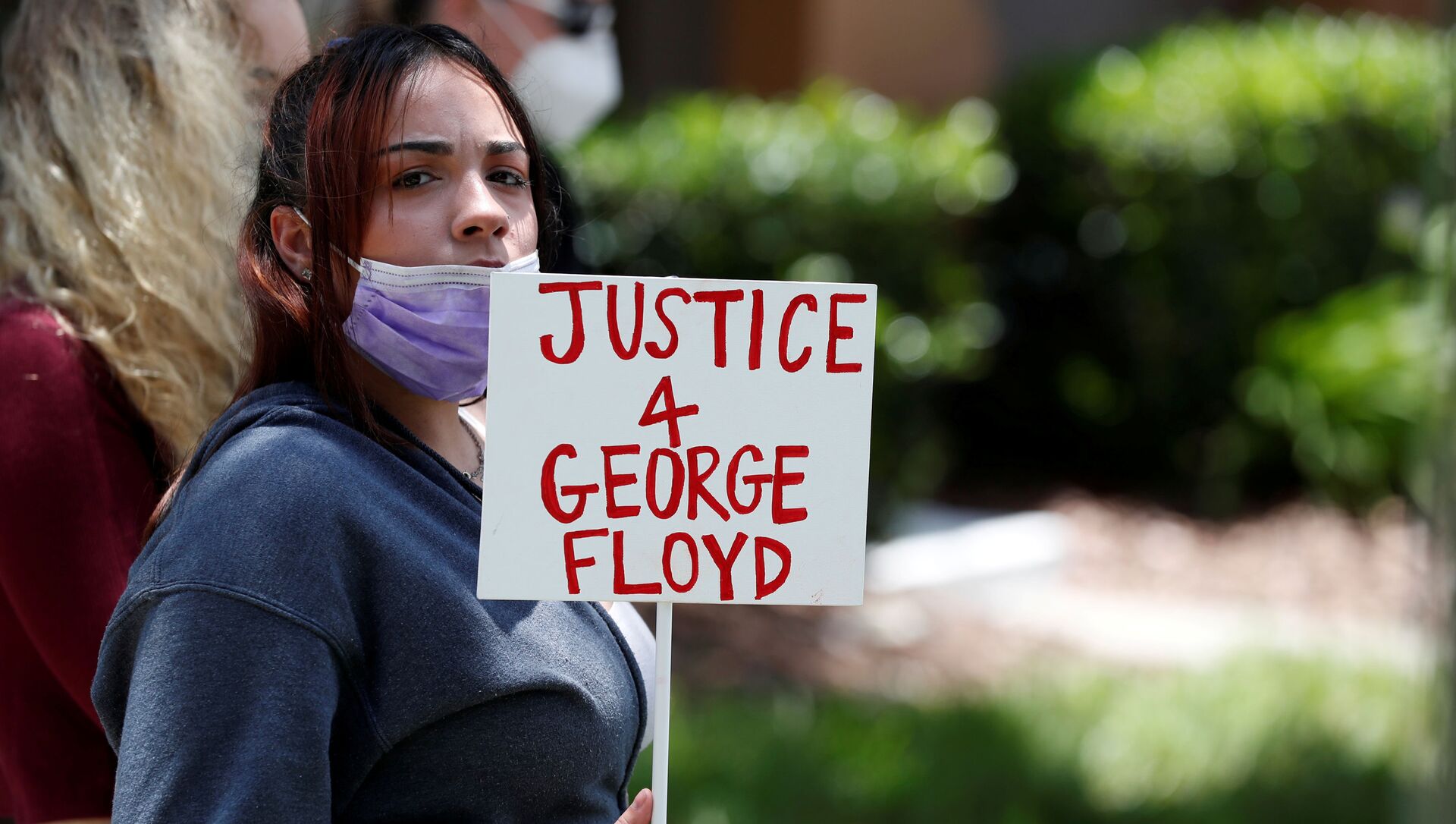A judge in Minnesota will begin selecting a jury on Monday, 8 March, for the trial of Derek Chauvin, 44, who is accused of the second-degree murder of George Floyd, 46, and could go to jail for up to 40 years if convicted.
Chauvin, who is white, knelt on handcuffed Floyd’s neck for eight minutes and 27 seconds as he repeatedly said: "I can’t breathe."

When the video clip of the African-American man’s death went viral it triggered a wave of demonstrations by Black Lives Matter activists, which in some places degenerated into riots and looting.
Then US President Donald Trump gave short shrift to the Black Lives Matter protesters and said at the time: "When the looting starts, the shooting starts."
The eyes of the world will focus on Hennepin County this week as Chauvin, who was fired by Minneapolis Police Department after the video emerged, goes on trial.
But what other trials have been the focus of such intense media attention?
George Zimmerman
In February 2012 Trayvon Martin, 17, was shot and killed in Sanford, Florida as he walked home from a convenience store.
Martin, who was African-American was unarmed and not committing any crime but George Zimmerman, 28, a neighbourhood watchman, claimed he shot him because he was acting suspiciously.

Zimmerman, who was Latin American, was acquitted of second-degree murder and manslaughter in 2013 and the Department of Justice declined to prosecute him for a federal hate crime charge.
In 2015 Zimmerman said he has a “clean conscience” and said of his fate: "It’s up to God and I put it all in his hands and I do have faith that whatever he has planned out for me is what’s best for me. So whatever he’s determined whatever he has planned out for me I am along for the ride and I just hope to be strong enough to see his will be done."
Beating of Rodney King
There are clear similarities between the George Floyd case and the beating of Rodney King in 1991 and President Joe Biden will be hoping Chauvin’s trial verdict does not trigger anything on the scale of the 1992 Los Angeles riots.
King, 25, was stopped by police for drink driving on the outskirts of Los Angeles in March 1991.
He offered no resistance but was knocked to the ground and savagely assaulted by white police officers who were oblivious to the fact that a local resident and amateur videographer, George Holliday, was filming the whole incident.
This was in the days before the internet but the video was soon shown on every US news channel and four white police officers were charged with assault and use of excessive force.
The trial venue was switched from Los Angeles to neighbouring Ventura County and in April 1992 a jury of 10 whites, one Latino and an Asian-American acquitted the four officers of assault.
Within hours huge riots broke out in LA.
The rioters caused US$1 billion worth of damage and 63 people died.
King himself famously said, when asked by reporters about the riots: "Can't we all just get along?"
OJ Simpson
Three years after the Rodney King trial another Los Angeles trial became even more of a media circus and this one was again laced with racial undertones.
In June 1994 Orenthal James Simpson was charged with murdering his ex-wife Nicole and her new boyfriend Ron Goldman outside their condominium in the suburb of Brentwood.

OJ Simpson was a household name - a former American football star who had a follow-on career in Hollywood - and the evidence against him was overwhelming.
But his defence team, led by Johnny Cochran and assisted by Kim Kardashian’s father Robert, managed to convince a largely African-American jury that OJ was the victim of a frame-up led by Detective Mark Fuhrman.
In November 1995 viewers across America and around the world watched in astonishment as Simpson was found not guilty and walked free.
He was later found liable in a wrongful death lawsuit and was ordered to pay the Goldman family US$33 million.
Michael Jackson
Another case the US media were obsessed with was the trial of pop star Michael Jackson.
Jackson, 46, went on trial at Santa Barbara County Superior Court in Santa Maria, California in 2005 accused of molesting Gavin Arvizo, a 13-year-old boy who was recovering from cancer.
The boy was allegedly molested when he spent the night in bed with the star at his home on the Neverland ranch.
The trial lasted for four months and throughout US news networks ran interactive polls asking viewers whether or not they thought the star was guilty.
Eventually, on 13 June 2005, Jackson was acquitted of all ten felony counts and four misdemeanours.
But after his death in 2009 fresh allegations emerged and in 2019 an HBO documentary, Leaving Neverland, claimed he had abused two children.
The Neverland ranch was sold for US$22 million last year.
Casey Anthony
In the summer of 2011 many people in the United States were rapt by the trial of Casey Anthony, an attractive young mother who was accused of a heinous crime - the murder of her three-year-old daughter Caylee.
Caylee was only reported missing three weeks after she was last seen in Orlando, Florida in June 2008.
It emerged at the trial that Casey had been out clubbing and sleeping with random men while her daughter’s tiny body lay decomposing in a swamp.
It’s been 10 years and I still can’t believe Casey Anthony was found not guilty...
— Momma Bron (@Bronwyn_Spears) February 28, 2021
Casey originally told police she had left Caylee with a babysitter called Zenaida Fernandez-Gonzalez, who had then disappeared.
But nobody of that name was ever found and, at the trial, Casey changed her story and claimed the child drowned in the pool at her parents’ home and they had agreed to cover it up.
The trial was live-streamed and many viewers were shocked when, in July 2011, the jury of seven women and five men found her not guilty of first-degree murder, aggravated child abuse and aggravated manslaughter of a child.
She was convicted of only four misdemeanours - providing false information to law enforcement - and was jailed for four years, although she was released immediately because of the time she had spent on remand.
Jack Ruby
On 22 November 1963 President John F. Kennedy was assassinated in Dallas, Texas and the authorities soon arrested Lee Harvey Oswald, who had spent time in the Soviet Union and was married to a Russian woman, Marina.
Two days later Oswald was being led in handcuffs from the basement of Dallas police headquarters to the county jail.
Television cameras rolled as police officers and FBI agents led Oswald passed a crowd of onlookers.
Suddenly a man stepped from the crowd and gunned down Oswald with a .38 revolver.
The man was Jack Ruby, a Dallas nightclub owner who was born Jacob Rubenstein.
Ruby, who was friendly with a number of police officers, went on trial in March 1964 and said he had acted out of patriotism because he was so outraged by the president’s assassination.
But he was convicted and sentenced to death.
Ruby died in jail in 1967 and that same year the Warren Commission ruled that neither him or Oswald were part of any wider conspiracy.
Conspiracy theorists have continued to claim Ruby was part of a wider conspiracy, a theory which was posited in Oliver Stone’s 1991 movie JFK.
Julius and Ethel Rosenberg
The Cold War was in full swing and Senator Joe McCarthy was carrying out a furious witch-hunt when Julius and Ethel Rosenberg were arrested and accused of spying for the Soviet Union.
Julius Rosenberg was accused of spying for the KGB while working at the US Army Signal Corps Engineering Laboratories and later recruiting others, like his brother-in-law David Greenglass who worked at the US nuclear weapons facility at Los Alamos in New Mexico.
Greenglass also accused his sister, Ethel, but would later tell a New York Times journalist he had only implicated her in exchange for his wife’s immunity.
The Rosenbergs were both found guilty of espionage and Judge Irving Kaufman overruled FBI director J. Edgar Hoover - who had hoped Ethel would be spared and persuaded to identify her handlers - and sentenced both to death.
On 19 June 1953 the Rosenbergs were executed by electric chair at Sing Sing prison in upstate New York amid uproar in liberal circles.
The Lindbergh Kidnapping
Between the First and Second World Wars newspapers sold millions of copies based on the criminal escapades of gangsters like Bonnie and Clyde, Al Capone and John Dillinger.
In 1932 the 20-month-old son of the famous US aviator Charles Lindbergh was kidnapped from his home in Hopewell, New Jersey.
A ransom was demanded but little Charles junior was killed almost immediately.
In January 1935 a German immigrant and former soldier, Bruno Hauptmann, went on trial and the US media covered the proceedings voraciously over the next five weeks.
He was convicted on the basis of circumstantial evidence - tool marks on a ladder used to kidnap the child matched Hauptmann’s tools and his handwriting matched the ransom note.
Hauptmann, 35, was found guilty of first degree murder and executed in April 1936, although his guilt has often been questioned in the years since his death.


